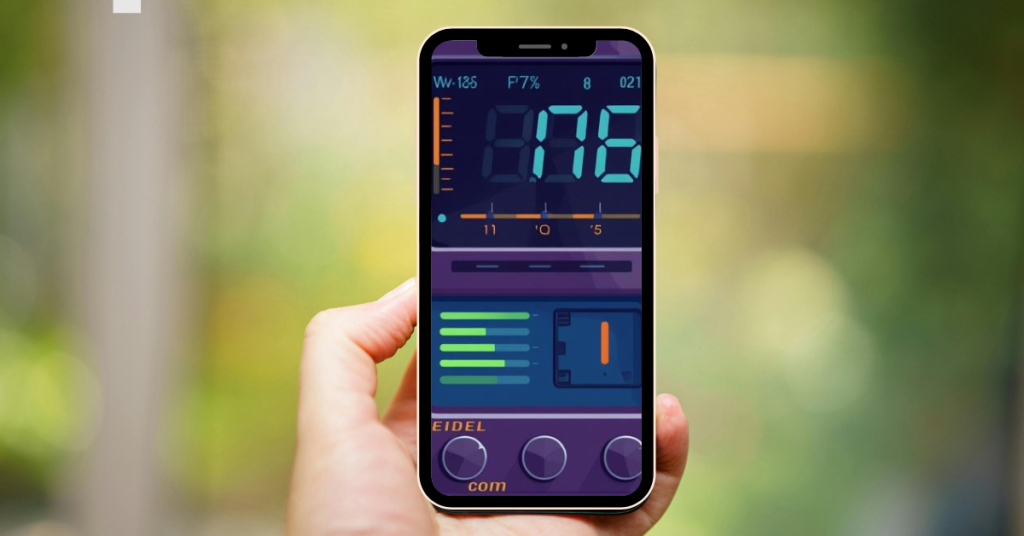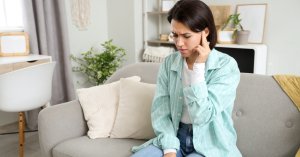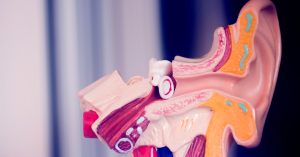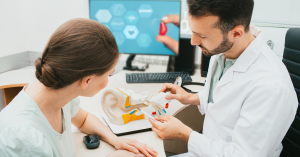Noise is a constant companion in our modern lives—whether it’s the rumble of traffic, the hum of appliances, or the chatter in a busy café. But how often do we stop to think about how loud our environments really are? For those concerned about hearing loss, staying aware of noise exposure is more important than ever. Fortunately, you don’t need a bulky sound meter or professional equipment to start monitoring the noise around you. All you need is your smartphone.
Today’s smartphones come equipped with powerful microphones and access to apps that can turn them into practical, pocket-sized sound meters. This simple shift in technology means anyone—especially adults over 50 or caregivers looking out for loved ones—can easily check if the sound levels they’re exposed to are safe. Whether you’re curious about the volume at your local gym or concerned about the noise level at your grandchild’s toy concert, your phone can give you answers in seconds.
In this article, we’ll show you how to measure noise with a phone, explain why it’s important, recommend trusted apps, and walk you through the steps to get accurate readings. By the end, you’ll feel confident using your phone as a tool to protect your hearing and make informed decisions about your sound environment.
Ready to get started? Let’s dive into why noise levels matter in the first place.
Why Noise Levels Matter for Hearing Health
Our ears are remarkable tools, capable of picking up the faintest whispers and withstanding surprisingly loud environments. But they’re also delicate—and prolonged exposure to high levels of noise can cause irreversible damage. Understanding noise levels and how they affect your hearing is a crucial first step in protecting it, especially as we age or care for others who may be more vulnerable to hearing loss.
The Danger of Everyday Noise
You don’t have to work in construction or attend rock concerts to be at risk. Common sources of potentially harmful noise include:
- Loud traffic or sirens
- Power tools or lawn equipment
- Busy restaurants and bars
- Hairdryers, blenders, or even vacuum cleaners
- Children’s toys that produce sounds over 85 decibels (dB)
According to the Centers for Disease Control and Prevention (CDC), noise above 70 dB over a prolonged period can start to damage your hearing, and sudden exposure to noise over 120 dB can cause immediate harm. The World Health Organization (WHO) echoes these warnings and has even issued safe listening guidelines for public spaces and personal audio devices.
What Does Decibel (dB) Mean?
The loudness of sound is measured in decibels (dB), a logarithmic scale that reflects how intense a sound is. For example:
- 30 dB – Whisper
- 60 dB – Normal conversation
- 85 dB – Heavy traffic (threshold for potential hearing damage)
- 100 dB – Subway train
- 120 dB – Live rock concert
- 140 dB – Firecracker (can cause immediate damage)
Repeated or extended exposure to anything above 85 dB can gradually damage the hair cells in your inner ear—the ones responsible for translating sound vibrations into signals your brain can interpret. Unfortunately, once these cells are damaged, they don’t grow back.
Why Monitoring Noise Is Especially Important Now
Hearing loss often happens gradually, which makes it easy to ignore until it becomes more serious. For older adults, existing age-related hearing decline (presbycusis) can be worsened by environmental noise. That’s why being proactive is key. Whether you’re protecting your own hearing or helping a loved one, knowing how loud your surroundings are gives you the power to make changes—like wearing ear protection, choosing quieter environments, or limiting exposure.
Thankfully, as we’ll explore next, you can begin measuring sound levels right now using just your phone.
Can a Phone Really Measure Noise Accurately?
It’s a fair question—how can a smartphone, designed for calls and photos, possibly measure noise levels with any real accuracy? While it’s true that professional sound level meters are more precise and calibrated to strict standards, smartphones are surprisingly effective for everyday noise monitoring. With the right app and technique, your phone can give you a solid estimate of environmental sound levels, enough to help you make informed decisions about your hearing health.
How Smartphones Measure Sound
Smartphones have built-in microphones that capture sound to facilitate phone calls, voice recordings, and videos. These microphones, while not as sensitive as those in professional sound meters, are capable of detecting changes in sound pressure levels. Sound measurement apps take this input and convert it into decibel readings using software algorithms. Many apps even allow manual calibration to improve accuracy, especially if you compare it with a known sound level or a calibrated device.
Some apps use reference data and in-app algorithms that adjust readings based on the phone model, improving consistency across different devices. While the readings might not be accurate to the decimal, they are often close enough (within ±2–3 dB) to be useful in identifying potentially hazardous noise exposure.
The Limitations
There are a few caveats to keep in mind:
- Hardware Variability: Not all phone microphones are created equal. Some models may under- or overestimate sound levels, especially in noisy environments.
- Directionality: Smartphones are not omnidirectional sound meters. How you hold the phone can affect readings.
- High Decibel Environments: Extremely loud noises (above 100 dB) may exceed your phone’s microphone capacity, leading to under-reporting.
Despite these limitations, numerous studies have found that certain noise meter apps can produce reasonably accurate readings when used properly—especially in typical environments like homes, restaurants, or city streets.
When Phone Measurements Are “Good Enough”
For general awareness and personal safety, your smartphone’s noise readings are more than adequate. If your app shows a consistent reading above 85 dB, that’s a strong cue to take precautions—whether that means moving to a quieter space or using ear protection. However, if you’re conducting official workplace assessments or need precision for legal compliance, a certified sound level meter is the way to go.
In the next section, we’ll look at the best decibel meter apps available for iPhone and Android, so you can pick the right one to start measuring noise with confidence.
Best Sound Level Meter Apps for iPhone and Android
[…section unchanged…]
FAQ
What is a safe noise level for everyday environments?
A safe noise level is typically under 70 decibels (dB). Prolonged exposure to sounds above 85 dB can damage hearing over time. Examples of safe environments include quiet conversations (60 dB) and typical home noise (50–60 dB).
Can a smartphone measure noise as accurately as a professional sound meter?
While not as precise as professional equipment, many smartphone apps offer reasonably accurate readings—within ±2–3 dB—especially when calibrated properly. For personal use and general awareness, they’re usually accurate enough.
Do I need to calibrate a sound level app?
Some apps allow or recommend calibration to improve accuracy, especially if you’re using the app in varied environments. Calibration can be done using a known reference sound level or another calibrated device. However, some apps like the NIOSH Sound Level Meter come pre-calibrated and are accurate out of the box.
Are noise levels from children’s toys really a concern?
Yes, many electronic toys can produce sound levels above 85 dB, especially when held close to the ear. This can pose a risk to young children’s hearing. Measuring the noise with a phone can help identify safer toy options.
How often should I use a noise meter app?
Use it as often as needed, especially in environments you suspect may be too loud—like concerts, restaurants, or during hobbies involving power tools. Regular use builds awareness and helps develop safer listening habits.
“This article is for informational purposes only and is not a substitute for professional medical advice, diagnosis, or treatment. If you are concerned about your hearing or ear health, please consult a qualified healthcare provider.”






